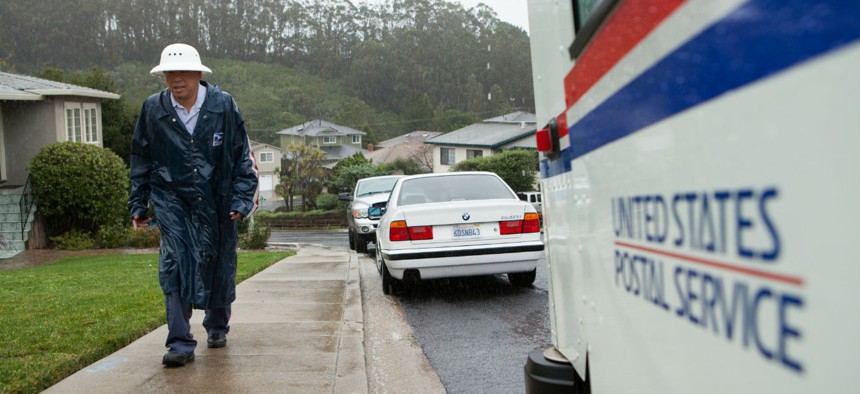Postal Service Exaggerated the Savings It Collected From Cutting Employee Compensation, Audit Finds
The agency hasn’t accounted for the costs associated with cutting pay and reducing benefits, GAO says.
The U.S. Postal Service has overestimated how much it saves from cutting employee compensation, according to a new audit, because it has failed to include new costs associated with high turnover and increased overtime.
As a result of cutting pay for new employees and offering an increasing number of workers non-career positions that earn less generous benefits, USPS has reported about $10 billion in savings between fiscal years 2016 and 2018. The Government Accountability Office, however, could only substantiate $8 billion of that total and found even that amount likely overstates the actual savings. Without a better read on the true impact of its personnel cost cutting, the auditors said, the Postal Service will be ill-informed as it makes future financial decisions.
USPS had 77,000 fewer employees in 2018 than it did 10 years earlier, though most of its job cuts came in the first half of that period. The agency has mostly added jobs in recent years due to an increase in delivery points and more labor-intensive package delivery. It has slashed a total of 300,000 jobs since 1999.
In addition to the job cuts, USPS has sought to reduce compensation costs by lowering pay for new career employees. Under new collective bargaining agreements, for example, a new city letter carrier hired in 2016 would see a starting salary of $37,000, compared to $48,000 for someone hired previously. Wage growth has also slowed to 1% per year for postal employees, compared to 2.3% in the private sector. GAO said it was unable to verify $2.3 billion of the savings USPS claimed from the pay reductions due to insufficient data.
The Postal Service has also hired more non-career employees who can be more easily laid off, face less certainty in their schedules and receive less generous benefits. They now make up 20% of the USPS workforce, up from a 10% cap under previous labor agreements. Postal management has claimed $8.2 billion in savings from this change between 2016 and 2018, but GAO said that number was actually $6.6 billion.
USPS’ third method of cutting personnel costs stemmed from reducing its share of employees’ health insurance premiums from around 84% to around 74%. The Postal Service said it achieved $1.6 billion in savings from that reduction, but GAO said it was $1.4 billion.
Postal management failed to consider several factors in determining its savings, GAO said. Non-career employees generally work more hours than their career counterparts, the auditors found, including more overtime and premium pay hours like Sundays. Lower-paid career workers also worked more and in many cases performed more overtime. USPS also compared the average pay for new non-career employees to median pay for career employees at all levels, rather than the career employees' starting salaries. USPS therefore estimated a gap of $25 per hour between career and non-career employee pay, whereas GAO said the difference was actually closer to $8 per hour when accounting for all factors.
Some stakeholders, such as union officials, told GAO the less attractive non-career positions have created recruiting difficulties and the less experienced workers are less productive. Postal management, however, denied those assertions. GAO found USPS was struggling with turnover, with 3% of employees leaving each month. The Postal Service denied that pay rates were affecting turnover, but GAO found in fiscal 2018 that 4.2% of workers at the lower pay rate left each month compared to 0.36% of those at the previous, higher rate. A USPS inspector general report found the Postal Service spent $30 million on non-career employee turnover costs in fiscal 2017.
GAO warned the errors could lead to poor decision making.
“Given that USPS regularly evaluates and manages employee compensation in its labor negotiation, as well as overall budget planning, without guidance on what factors are necessary to consider when developing employee compensation cost estimates, USPS risks making ill-informed decisions about whether to maintain, or make additional, changes to compensation,” they auditors said.
Postal management disagreed that the agency had exaggerated its savings, but agreed to incorporate more factors into calculations going forward. The GAO report follows 2018 findings from the USPS inspector general that found the agency realized just 5% of its projected savings by eliminating overnight delivery of regular, first-class mail and pushing back some of its two-day delivery to a three-day window. The Postal Service, which advocated the changes to enable the closure or consolidation of nearly 200 processing plants, estimated it would save $1.6 billion but instead saw just $90 million.
NEXT STORY: Your 2020 To-Do List






